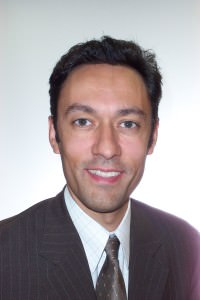The Science of Saving
“There are lawyers, doctors, accountants, teachers and even financial planners going bankrupt because they spend more than they earn.”
By Jorge Ramos – CFP, CLU, CFE
 With 19 years of experience in the retail financial services industry, Mr. Ramos is a passionate advocate of financial literacy, a partner with Second Opinion Investor Services Inc. and the founder of ‘Camp Millionaire’ in Canada.
With 19 years of experience in the retail financial services industry, Mr. Ramos is a passionate advocate of financial literacy, a partner with Second Opinion Investor Services Inc. and the founder of ‘Camp Millionaire’ in Canada.
Before you borrow from your credit card to set up your margin account and leverage yourself to the max to buy shares in CITI, let’s go over some of the basics about money.
I believe that you always have to start with the basics. Without a solid foundation for learning, in whatever field you are in, more advanced knowledge has little chance of being assimilated.
If you are reading this magazine, you are probably enrolled in a financial program, maybe taking your CFA and/or are looking to move into the financial industry. However, how many of you are struggling with debt? How many of you find that you run out of money before you run out of month? How many of you have ever learned basic money management skills?
No matter how sophisticated or knowledgeable you are about investments or how successful you have been with investing, very few people have really good money management skills. There are lawyers, doctors, accountants, teachers and even financial planners going bankrupt because they spend more than they earn.
In this ongoing series, we are going to be addressing knowledge that may seem basic but unfortunately is not commonly known. We will be talking about saving strategies, credit cards, credit score, mortgages vs. lines of credit, how to save money at school and much more. I encourage you to send in your questions or to suggest a topic for future issues.
This month we will start with the Science of Saving. In order to be a successful investor, you first have to be a successful saver.
Step 1: Track Your Expenses
A coffee a day, a few nights out a week, a couple of magazines a month—before you know it, you are out of money and have nothing to show for it. Keeping a written log is a critical first step to improving your financial future. Track every expense, every penny you earn and spend. It doesn’t have to be tedious or take a lot of time. It can be as simple as keeping all your receipts and then logging them on a spreadsheet every evening. Another strategy is to only use your debit cards so that you have a written record. Most smartphones also have apps available that can help you track your expenses. It doesn’t matter how you track it, just make sure you track every dollar you spend. Be honest with yourself.
Step 2: Categorize Your Expenses
Do this for at least the next month so that you can identify where your money is going. Then summarize your expenses into major categories and classify them as either a need or a want. Needs are rent, food, medicine, transportation, and anything else essential to life. Wants are everything else. Your cell phone is not essential to life, you will not die if you don’t have your morning coffee, make-up is not as important as water. Be clear on what is a need or a want. The goal here is not to eliminate wants (at least not yet) but rather identify the long term financial impact of this morning’s latté.
Step 3: Try Different Scenarios
Now multiply those expenses times 12 to see how much you are actually spending in a year. Review each expense and see how much you can save each year by elimintating or reducing some of those wants. even something as simple as switching from a daily five dollar to a two dollar coffee can save you over $600 in a school year of 200 days. Your coffee just paid for a new laptop! Even the “needs” should be reviewed to ensure that you are not living like a king on a pauper’s income. Consider how you spend every dollar and what else that dollar could have been used for. Every dollar has the possibility for greatness – not just instant gratification.
As Warren Buffet once said:
“Someone is sitting in the shade today because someone planted a tree a long time ago.”
How will you choose to plant the seeds of loose change rattling in your pocket?
In the next issue, we will discuss how to automate your savings using a proven system used by millions.
Jorge Ramos – CFP, CLU, CFE
Jorge Ramos has 19 years of experience in the retail financial services industry. His most recent position was as a private wealth consultant with one of the country’s most highly-respected private banks.
A passionate advocate of financial literacy, Jorge started ‘Camp Millionaire’ in Canada, a summer camp that teaches children basic life skills in money management and investments. He has also partnered with Second Opinion where his wealth of experience allows him to advise clients on a wide range of issues related to investments and personal finances.
www.financialiq.ca
www.secondopinions.ca
jramos@financialiq.ca





























Share the post "The Science of Saving"